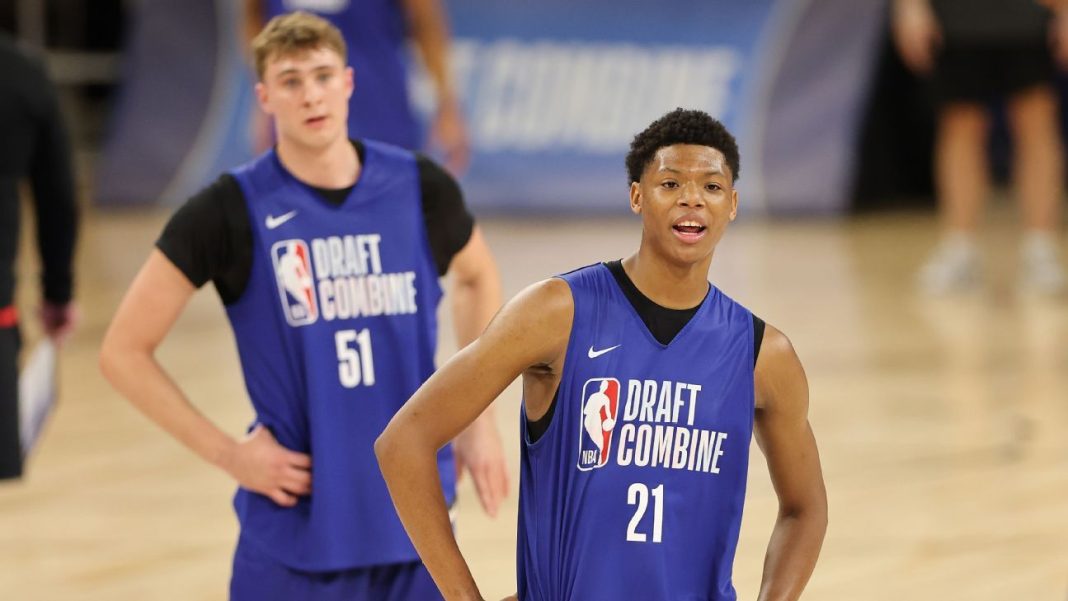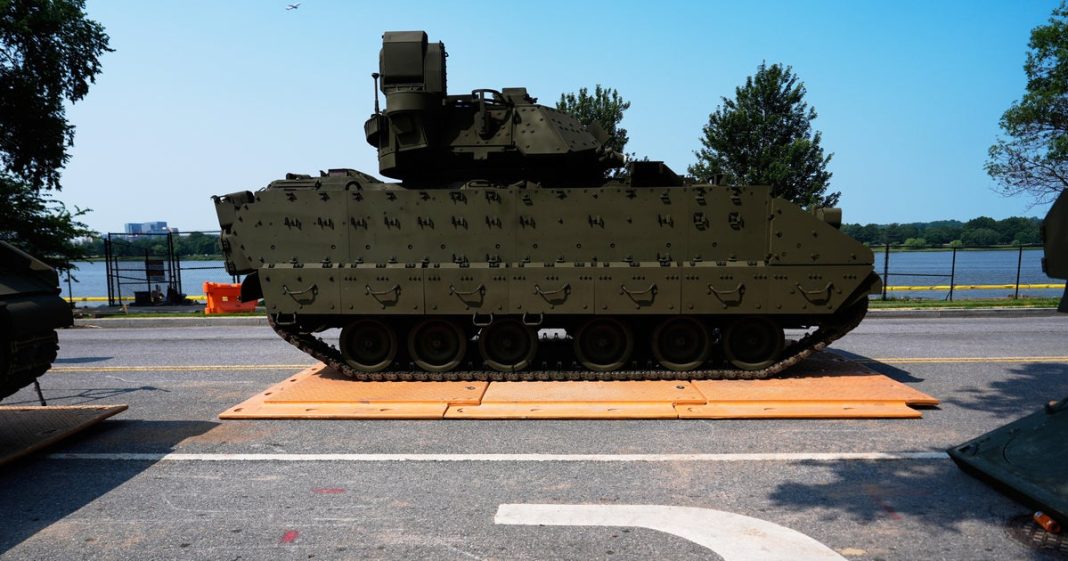


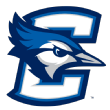



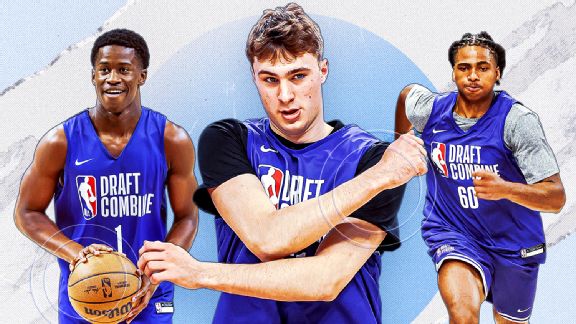



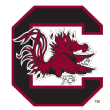

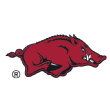





NBA front offices have canvassed the globe for the past year in preparation for the 2025 draft, scouting prospects and narrowing down their boards. Now, it’s decision-making mode.
Scouting reports are filled with details and descriptors to distinguish prospects. Evaluation encompasses myriad factors, of course — but which prospects have earned superlatives? Who comes to mind as the best playmakers, shooters and defenders in this class?
Now that the draft is less than two weeks away — Round 1 begins June 25 at 8 p.m. ET on ABC and ESPN — analyst Jeremy Woo matched 20 prospects with the traits that make them special, as a way to understand how this class stacks up and how the top players could reach their long-term potential.
More NBA draft coverage:
Trade offers for No. 1 | Lottery pick comps
Latest mock draft: Need vs. best value
Draft assets | Top 100 rankings | Pelton’s top 30

Top 100 ranking: No. 7
Fears obliterated expectations at Oklahoma thanks in large part to his exceptional handle and his ability to get all over the floor with a live dribble, keeping defenders off-balance. He applies relentless pressure on the paint without being the biggest or strongest guard, using his change of pace, jittery style and instincts to get downhill.
Fears is smooth and decisive with the ball in his hands and doesn’t waste as many dribbles as expected for a guard his age — he’s more function than flash in how he creates space. It’s extremely impressive stuff from an 18-year-old who reclassified to start college a year early. As the threat of his jump shot progresses and his decision-making improves, Fears should become an even more dangerous cover.
Top 100 ranking: No. 2
Harper’s size, power, pace, finishing craft and vision combine to make him this draft’s top shot creator. This was on display during his best moments at Rutgers — despite a suboptimal team around him — with his decisiveness and burst enabling him to dissect defenses and create shots for himself and teammates.
Harper finished in the 87th percentile (inclusive of assists) for pick-and-roll handlers, per Synergy, and shot a solid 36.8% in isolation situations. He also converted 67.6% of his shots at the rim. His well-rounded offensive numbers help back up the comparisons to current NBA players Cade Cunningham and Jalen Brunson.
Harper’s ability to make quick decisions, play through contact with explosion, split coverages and spray passes all over the floor sets him apart from the rest of this class as a player with the chops to eventually shoulder the load for a successful NBA offense.
Top 100 ranking: No. 10
Jakucionis has proved to be a particularly challenging cover working with a screen in front of him, where his vision, creativity and acute sense of timing intersect to make him an outstanding operator. The vast majority of his offensive workload came in ball screens — his 501 ball-screen possessions (among the highest total in the country) led to a basket 41.7% of the time, including assists (65th percentile nationally), a number made more impressive by the fact the Illini didn’t have consistent 3-point shooting or ideal spacing around him last season.
Jakucionis also became more comfortable getting to his own shot when defenses loaded up the paint, with his jumper becoming a viable counter for his average explosiveness around the rim. Though he presses at times, leading to aggressive turnovers, his size, unselfish mentality and instincts navigating traffic should translate well into an NBA role, whether it’s as a full-time point guard or combo playmaker.
Top 100 ranking: No. 33
Kalkbrenner developed into an extremely efficient finisher over five years in college, even if some might consider his game boringly effective. The 7-foot-2 big man shot a remarkable 73.1% on rolls to the basket last season and strung together three straight seasons making more than 70% of his 2-point attempts. It’s fair to ask how much that level of offense will translate, as Kalkbrenner isn’t the quickest off the floor or most powerful playing through contact.
However, the 23-year-old has excellent spatial awareness, does a good job making himself a target and has reliable hands, all contributing to a giant catch radius that makes him a useful lob threat. Though NBA scouts don’t project him to be a full-time starter — he is hovering in the late first round at best — the numbers back up his case as a highly efficient, low-usage center whose primary added value will be protecting the paint defensively.
Top 100 ranking: No. 3
No player in this draft class is more dangerous in a tight window than Bailey, whose ability to rise and fire over defenders at difficult angles and knock down tough shots off the bounce make him a tantalizing scoring prospect. Though he’s still relatively unpolished at 18 years old and operated without a ton of help other than Harper at Rutgers, that element of Bailey’s skill set shone through this past season; he’s far from the most consistent player in this draft class, but there’s no pull-up scorer as projectable long term.
Bailey hit an impressive 47% on midrange jumpers last season — many of them contested — pointing to his shotmaking acumen, even though much improvement is in order from the free throw line and from 3. The star potential some scouts see lies in his ability to keep converting at a high rate, a rare skill for a wing his size at 6-9.
0:23
Ace Bailey fights through 2 defenders and a ref for a basket
Referee Jeffrey Anderson gets tangled up in the action as Ace Bailey scores for Rutgers.
Top 100 ranking: No. 4
Edgecombe’s highlight-reel dunk against Gonzaga to begin the 2024-25 season served as his entrance to college basketball. He’s an exciting and highly functional athlete who can put his explosiveness to use in game settings, giving him a potentially major advantage as a shot creator long term. He registered 33 dunks at Baylor this season — an excellent number for a guard — able to play bigger than his size and meet opponents around the rim both as a finisher and on the defensive end.
His impressive vertical leap, strong 193-pound frame and quick first step underscore his upside as a player some teams believe can evolve into a physically gifted long-term lead guard.
Top 100 ranking: No. 12
Bryant is built sturdy, standing around 6-8 in shoes with a 6-11¾ wingspan, broad shoulders and weighing 215 pounds. His picturesque basketball body has been a selling point for scouts throughout the season. Though his length isn’t off the charts, the projectability of his frame, which scouts believe has room to add more muscle, is a big part of his appeal: It’s not just that he’s a solid 3-and-D prospect, he also might be able to legitimately guard 2s, 3s and 4s as he continues to fill out.
Bryant’s closest physical dimension comp is Los Angeles Laker Dorian Finney-Smith, who has had a long and valuable NBA career. Bryant’s natural strength should produce even more defensive versatility, however. At 19 years old, Bryant’s physical profile leaves room for optimism, and has bolstered his case for the late lottery.
Top 100 ranking: No. 8
Knueppel is automatic with his feet set, making 48.8% of no-dribble spot-ups, 43% of all catch-and-shoot jumpers (92nd percentile on Synergy) and 40.6% of his 3s. His clean mechanics and textbook release back up the numbers, and there’s little doubt that his shooting offers a valuable floor projecting out.
The vast majority of his looks were assisted, and he didn’t fare as well hitting shots off the bounce (32.8%), but the excellent spacing Knueppel will immediately provide should supply value on his rookie contract. If he can take it to another level shooting off the bounce, his high-end outcomes start to get interesting.
Top 100 ranking: No. 5
Johnson proved himself as a high-level shooter at Texas, where he was asked to do a lot with the ball in his hands. He was also particularly effective shooting off screens, rating in the 91st percentile on those play types nationally, per Synergy, while making 52.1% of his shots and proving equally capable going left and right.
Johnson has quick, compact shooting mechanics, and his potential to be an elite off-ball scorer gives him a valuable pathway to NBA success as the threat of his shot will likely open up space. Johnson shouldn’t have to be a No. 1 scoring option to be valuable, which raises his floor considerably when projecting.
Top 100 ranking: No. 11
With a dizzying array of passes at his disposal at 6-9, Demin is the draft’s most aesthetically pleasing playmaker, with the size to see over defenses and a willingness to try things most players won’t. He’s a creative passer with excellent timing, a skill that should make him impactful whether he’s playing full time on the ball or off.
He can throw tough diagonal skip passes that force defenses to rotate, which often lead to hockey-type assists that don’t show up on a stat sheet. Though Demin isn’t a natural isolation player creating for himself, he should be plenty dangerous with a ball screen or working as a second-side initiator, as long as he makes enough shots to keep defenses honest.
Best rim protector: Joan Beringer, C, Cedevita Olimpija (Adriatic League)
Top 100 ranking: No. 15
Beringer’s stock skyrocketed this season as scouts gradually made the trip to see him in Europe, as his excellent defensive instincts and shot-blocking chops at 18 years old were on display. In his first season playing at senior club level with Cedevita, Beringer finished with the best block percentage in the Adriatic League — a 2.9 shots per-40 pace adjusted across all competitions.
At 6-11 with a 7-4½ wingspan, he covers ground quite well already for a player who is still getting used to his body and has minimal experience.
Beringer has good feet defensively, and his ranginess should allow him to succeed in various screen coverages, able to switch and hedge better than most players his size. Though his offense is still a work in progress, his impact patrolling the paint has earned him consideration as a potential lottery pick with significant room to improve.
1:11
Joan Beringer’s NBA draft profile
Check out some of the highlights that have made Joan Beringer a top NBA draft prospect.
Top 100 ranking: No. 14
A dive into Murray-Boyles’ defensive habits illustrates why some scouts are high on his NBA outlook. Despite standing 6-6 barefoot, undersized for a four-man, he’s a player who regularly makes the most of what he has defensively, due largely to his outstanding awareness, strong hands and excellent timing. This stood out even in a losing context at South Carolina.
Murray-Boyles is versatile enough to switch across positions and does a terrific job of reading and reacting to plays, whether it’s rotating over for a block, digging down to swipe at the ball or putting himself in the right place to act as a deterrent. Those qualities help project him out at the NBA level: There will be certain one-on-one matchups where his size might be a challenge, but Murray-Boyles is a great bet to enhance defensive schemes and raise his team’s basketball IQ on the floor.
Top 100 ranking: No. 31
Though his stock dipped after an uneven freshman season, Powell’s ability to guard the perimeter remains a strong selling point as a developmental investment. At 6-6 with a 7-foot wingspan, Powell can sit down in a stance and slide with smaller guards, fight through screens, and switch effectively at the point of attack — a better blend of defensive traits than any wing in the class. His strength, length and agility makes him a challenging matchup for most ball handlers.
As an excellent run-jump athlete who can block shots in pursuit and impact the passing lanes, Powell’s potential as a defensive cog is clear. There could be value for a patient team selecting him later in the draft, provided he can make enough shots to be a useful role player on the offensive end.
0:13
Drake Powell gets the and-1 to fall
Drake Powell gets the and-1 to fall
Top 100 ranking: No. 32
Thiero’s NBA appeal has long centered around his excellent defensive potential. When healthy and at his best, the 6-8 forward flies around the court, which made him one of the most disruptive defenders in college basketball. Thiero has a great combination of speed, strength, length and explosiveness that make him a threat to sky for blocks, jump passing lanes and blow up plays.
His awareness and overall tendencies could be better — he can take too many risks and be inconsistent — but he has the capacity to make highlight-reel plays that most players can’t. Thiero missed the end of the season because of injuries and is still very much a project, but his ability to create turnovers (career 1.9 steals and 1.3 blocks pace adjusted per-40) makes him worth a developmental investment.
Top 100 ranking: No. 40
Broome’s burly presence on the boards was an essential part of Auburn’s success the past few years — he averaged 3.6 offensive rebounds per game last season (14% OReb rate) and shot 64.5% on putbacks. At 6-10 and nearly 250 pounds with an approximate 7-foot 1/4 wingspan, Broome consistently relied on physicality and positioning to hunt 50-50 balls off the glass despite below-average verticality off the floor.
And with 14.1 boards per-40 pace adjusted, Broome was the top NCAA-based rebounder among prospects in ESPN’s Top 100 rankings. While Broome’s age (he turns 23 on July 19) and athletic profile raises fair questions about to what extent it will translate to the NBA, it’s hard to knock his consistent work on the glass and its overall impact on winning.
Top 100 ranking: No. 1
We’ve spent much of this draft cycle highlighting the diversity of Flagg’s skill set and impact — but the special quality that pulls it all together and sets him apart from his peers is his intense-yet-controlled competitiveness and internal drive. That element of who he is has no off-switch, something evaluators love about him and have seen in every setting to date. As the backbone of Duke’s successful season and Final Four run and also one of the youngest players in college basketball, Flagg made quite the case for himself with not just his productivity, but his approach.
There’s a level of natural leadership that stems from how he carries himself, making him a rare tone-setting player at 18 years old. When you couple Flagg’s makeup with the basketball skill, playmaking versatility and on-court IQ, it’s exceedingly easy to feel good about what the future holds.
1:16
What Cooper Flagg brings to a franchise
Cooper Flagg’s energy and leadership are the big traits that stand out to Jonathan Givony.
Top 100 ranking: No. 27
Florida’s NCAA championship run was spurred largely by Clayton’s shot-making theatrics, with a series of huge performances and clutch shots, turning the guard into a March hero. His ability to create separation off the bounce, get to his own shot, and shoot over contests with composure set him apart from his peers and single-handedly boosted his draft stock in a real way.
While Clayton can be streaky, he has displayed a real embrace of big moments, vaulting himself into the first-round picture similarly to what Shabazz Napier did in 2014. It’s this type of big-shot mentality teams like to bet on, the hope being Clayton can become a useful depth player and bench sparkplug in short order.
Best motor: Hugo Gonzalez, SG/SF, Real Madrid (Spain)
Top 100 ranking: No. 23
Gonzalez’s role at Real Madrid has been inconsistent — typical for a teenage prospect trying to break through at one of the world’s top clubs — but his calling card as a player has long been the fact he plays exceptionally hard. That manifests on the defensive end, where he embraces doing the dirty work: playing in passing lanes, hustling for rebounds and even chipping in highlight blocks. He’ll run the floor hard in transition going the other way, and is always willing to sacrifice his own body for the good of the team.
The level of want and desire Gonzalez plays with has always been endearing for scouts, and has helped him earn increased trust and minutes over the past month. His sporadic offensive production has made it difficult to improve his stock over the past year, but NBA teams know what type of effort he brings, giving him a chance to carve out a role in due time.
0:54
Hugo Gonzalez’s NBA draft profile
Check out some of the highlights that have made Hugo Gonzalez a top NBA draft prospect.
Top 100 ranking: No. 24
Raynaud’s late-blooming basketball career has unfolded on a unique trajectory: He didn’t pick up the sport full-time until his final year of high school in Paris, where he was focused on swimming and chess. He wasn’t viewed as a big-time prospect even after joining French club Nanterre, where he grew close with a rising star named Victor Wembanyama before ultimately deciding to play college basketball at Stanford. Drawn to the school for academic reasons (he originally planned to pursue astrophysics), he attended as a walk-on before converting to full scholarship, and eventually becoming the starting center.
Raynaud is well-regarded for his affable personality and has been viewed by NBA teams as a player with untapped potential now that basketball is his full-time focus, and a breakout at the NBA combine in Chicago helped solidify him as a first-round level prospect.
Top 100 ranking: No. 6
Maluach is expected to be the first center off the board due to his impact for Duke as one of college basketball’s premier paint deterrents — but his appeal as an NBA prospect also has much to do with who he is as a person and what he’ll bring to a locker room. Born in South Sudan before his family took refuge in Uganda, Maluach arrived late to basketball before landing at the NBA Academy Africa, where he built a strong reputation.
Maluach checks every box teams look for off the court: He’s regarded as a beloved teammate, intense competitor, excellent on-court communicator and hard worker who will add value to an organization in those respects. His major improvement over the past several years from a skill and consistency perspective speaks to his character, having turned himself from a project into a top prospect in a short period of time.
Source link


